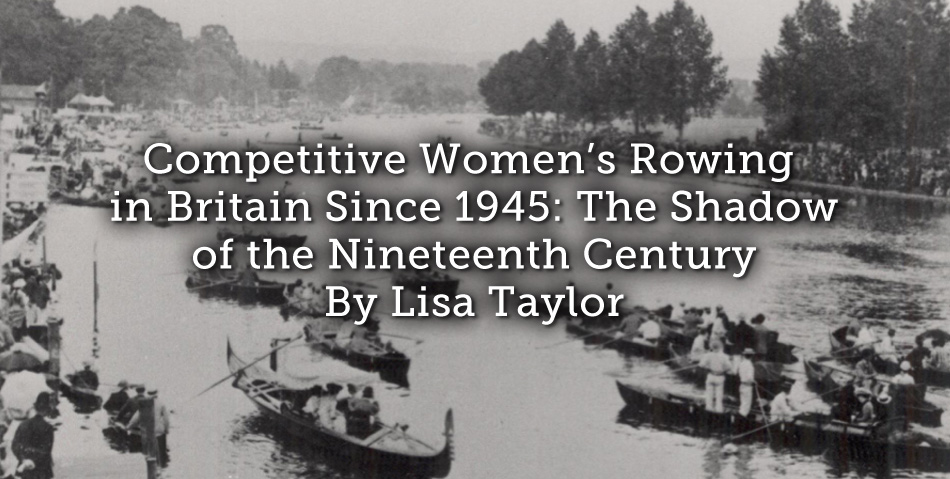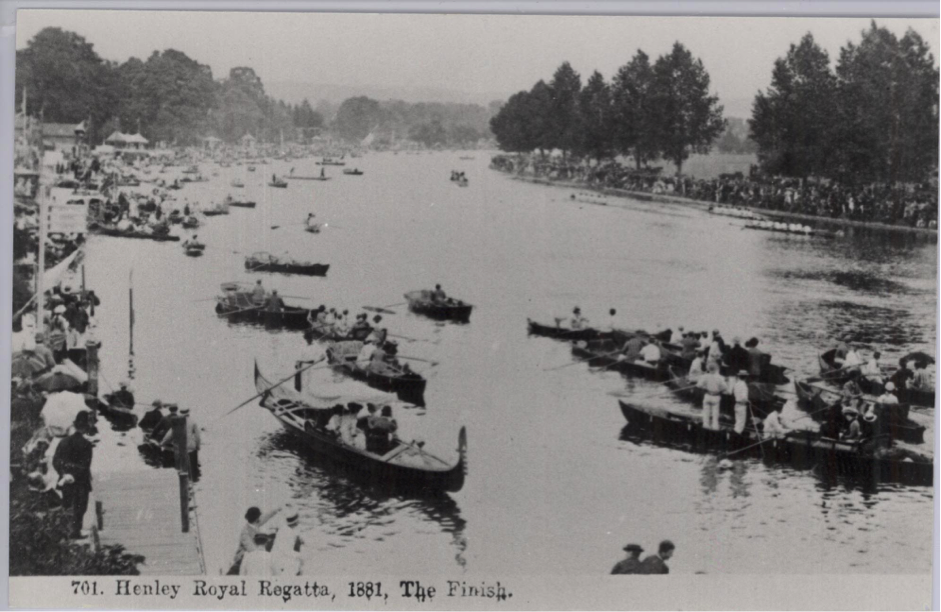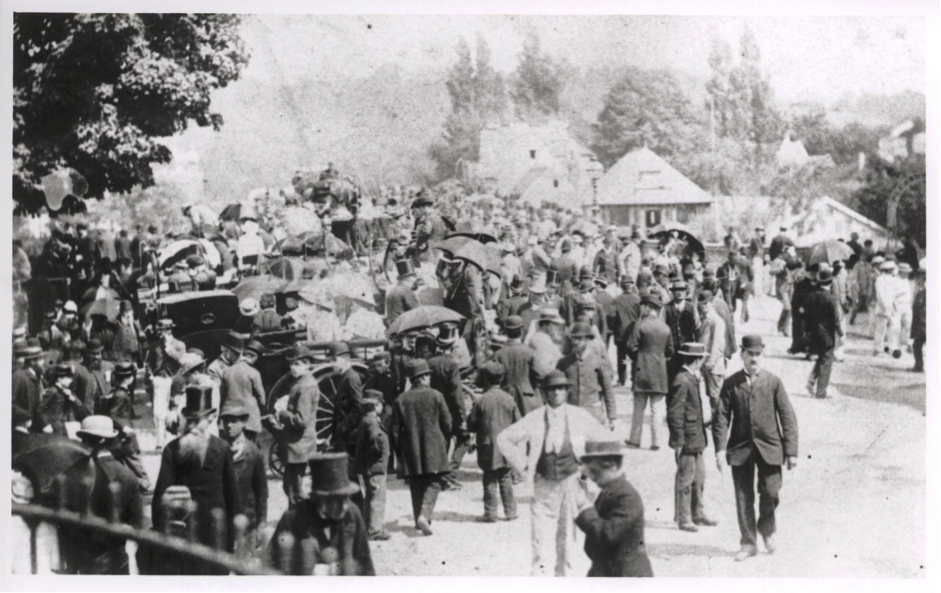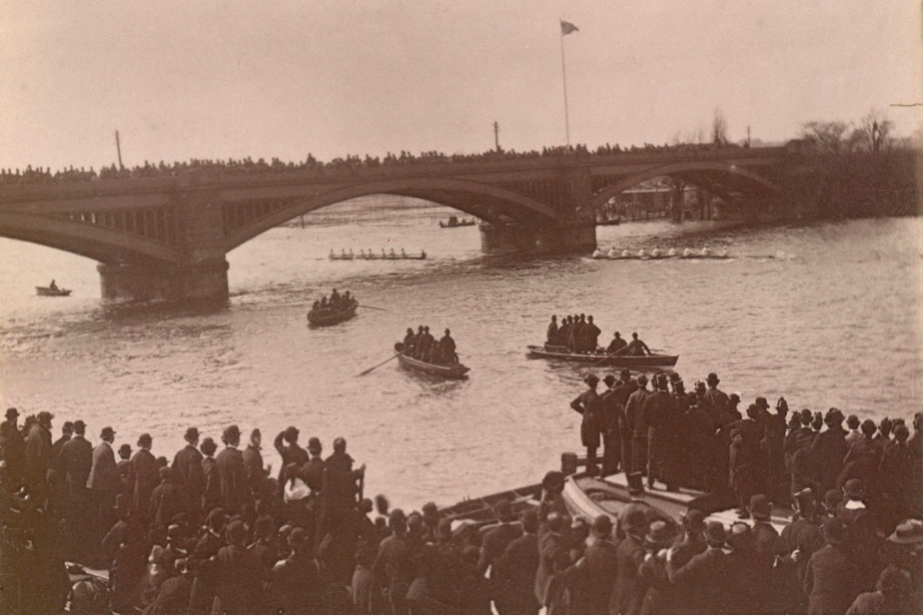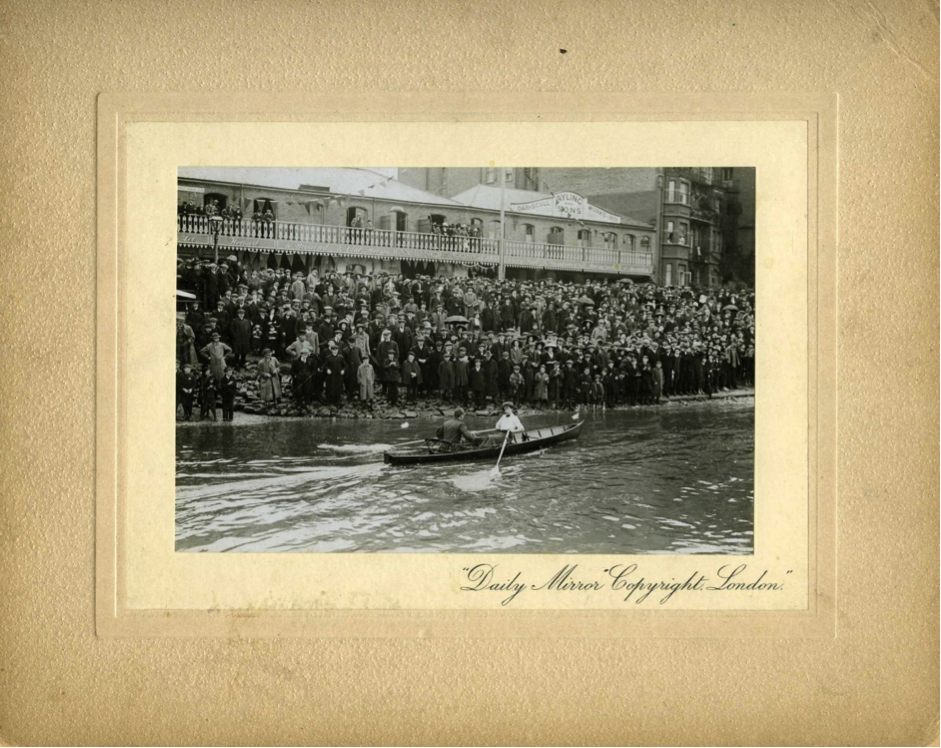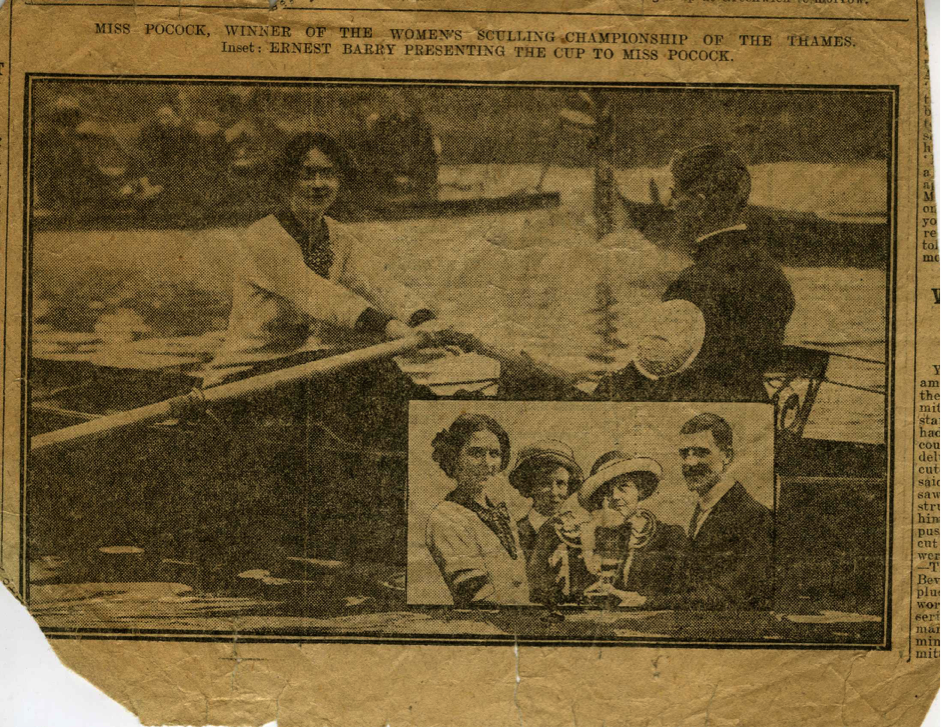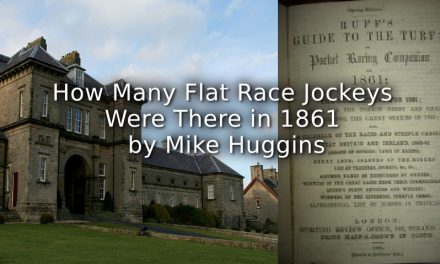In recent years, the participation, visibility and success of competitive women’s rowing has increased exponentially. Yet progress with regard to competitive rowing has been uneven, and access to competitive opportunities remains limited and conditional – especially when these opportunities form an important part of the historical identity of the sport in Britain. The Oxford and Cambridge Boat Race, for example, has only involved men’s and women’s openweight crews (Blue Boats and Reserves) on the same day, on the same course, since 2016. Henley Royal Regatta, one of the most prestigious events in the rowing calendar in Britain and abroad, offers just four women’s events (three senior and one junior) compared to sixteen men’s, and no open women’s event existed until 1993, after a couple of invitational test events in the early 1980s. [*Update: the 2017 programme introduced three new senior open women’s events, so now seven of twenty-three events are open to women, and an equal number of open events are contested by men and women.]
Perhaps unsurprisingly, Britain’s most iconic rowing establishments have been the most problematic for women to enter, a fact that leads us to consider the reasons why women had not formed part of this rowing establishment from the outset. The Boat Race, Henley Royal Regatta and the modern Olympics are all nineteenth-century creations, first occurring in 1829, 1839 and 1896 respectively. It was over this period where modern sport was formalised: boys’ public schools constructed games and physical strength in an exalted, masculine yet gentlemanly mould of muscular Christianity, and the same ideals were subsequently codified for adult sport in the form of governing bodies, and influential in Coubertin’s founding of the modern Olympics.
- Postcard image of Henley Royal Regatta ‘The Finish’ (1881) © River & Rowing Museum
- Photograph of spectators at Henley Royal Regatta (1881) © River & Rowing Museum
- Oxford crew 1870: Oxford University VIII, in front of the OUBC barge © River & Rowing Museum, courtesy of the Thomas E. Weil Collection
- Oxford and Cambridge Boat Race, 1886. © River & Rowing Museum
Sport had evolved differently in girls’ schools. The concerns of constitutional overstrain that had restricted girls’ academic education were applied to their physical activities, and even when a more symbiotic understanding of the relationship between mind and body emerged, it was thought that the female body should perform controlled, aesthetic movements, preferably within the safe space of the school walls, and without compromising standards of dress and personal appearance. There are difficult ideals to reconcile with the pursuit of rowing: a sweaty and athletic pursuit, requiring some modification to dress even before the advent of sliding seats, and necessarily outdoors, subject to the elements and the public gaze.
This is not to say women did not row in the nineteenth century – indeed, there is plenty of evidence of women’s participation in rowing at this time – but the form this participation took was heavily defined by class. While ‘boating’ was a hugely popular activity for the middle and upper classes in this period, especially in the Thames Valley, competitions were largely the preserve of the working classes. For the most part, while working class women might compete on the tideway for prizes, middle and upper class ladies were more likely to paddle gently on benign waters, purely for leisure – a trend which would continue into the twentieth century.
- Lucy Pocock racing past crowds in the 1912 Women’s Sculling Championship © River & Rowing Museum
- Newspaper image of Lucy Pocock racing, and being presented with her trophy, following the 1912 Women’s Sculling Championship © River & Rowing Museum
The Amateur Rowing Association (ARA) was established in 1882 largely to maintain the exclusive standards of amateurism desired by gentlemen rowers. Rowing was not alone in this: the amateur ideal, which promoted the pursuit of a wide range of activities, and scorned training and specialisation, was prevalent outside of the working classes across a number of sports. As well as excluding the working classes, the ARA would also exclude women – a further reflection of the class concerns that helped to form its rules. The result of the ARA’s tight restrictions on eligibility to row was the formation of two separate groups: the National Amateur Rowing Association (NARA) in 1890, to represent male working-class rowers, and the Women’s Amateur Rowing Association (WARA) in 1923 for female rowers of similar social standing to members of the ARA. The WARA create a significant number of opportunities for domestic and international competition, but they were not permitted to access the formal international races they desired.
In 1954, female rowers enjoyed the first fundamental change to the governance of competitive women’s rowing as the Fédération Internationale des Sociétés d’Aviron (FISA) sanctioned women’s events, raced over one kilometre (half the distance of the men’s championship course) in the European Championships. This sanction would provide useful precedent for athletes and administrators lobbying for the IOC to introduce women’s events to the Olympic programme. It would be 1976 before the Olympic regatta would accommodate women’s events though, a fact perhaps reflective of the particular conservatism of its board and ideals of the event, and 1985 before FISA and the IOC would extend the official women’s racing distance to two kilometres – a hangover of concerns about pushing the physical limits of the female body too far.
Once FISA and Olympic policies for men’s and women’s rowing had been standardised, the issues remaining for female rowers were more domestic – whether in terms of the support the women’s team received for international racing, or the opportunities they had in domestic racing. Both of these show signs of moving towards equality within the sport by degrees, and the pace of this progress has noticeably picked up in the past two decades with the injection of National Lottery funding developing a more professionalised sport, with increasing professional accountability with regard to gender equality. But women’s rowing in Britain, most particularly in the most iconic institutions of the sport, was to take place in the shadow of the nineteenth century well into the second half of the twentieth century, and even into the twenty-first century.
* Note – this article was originally published in December 2016 , thus necessitating this update.
Article © Lisa Taylor

